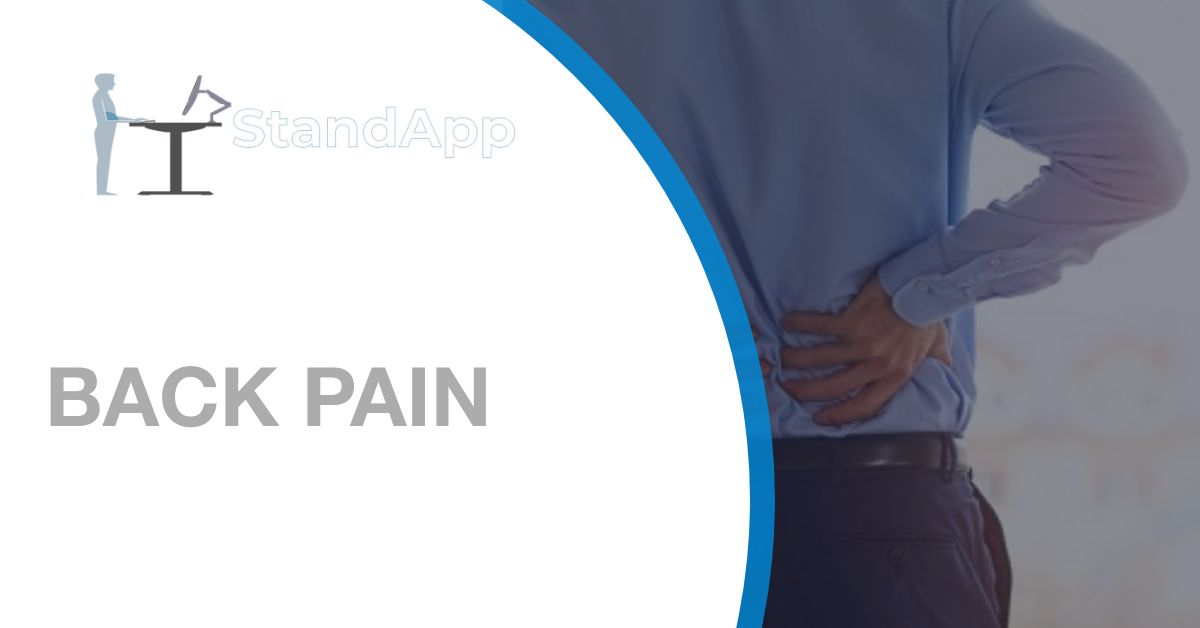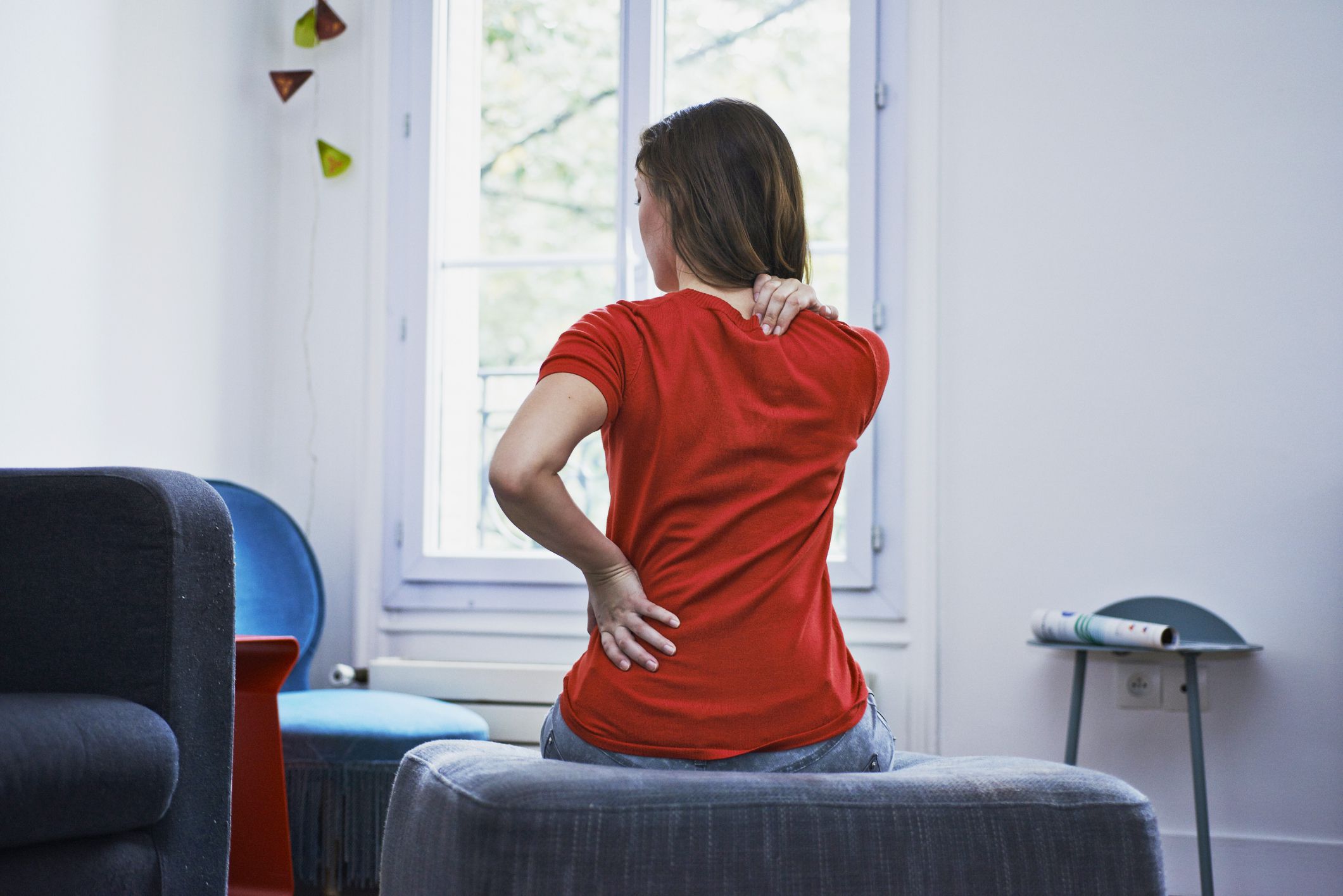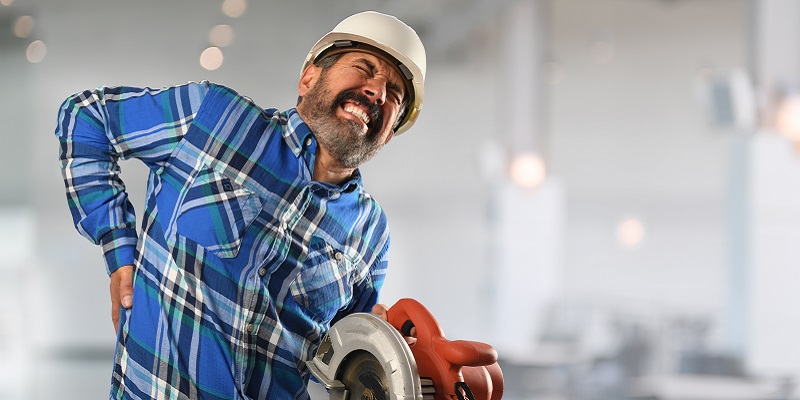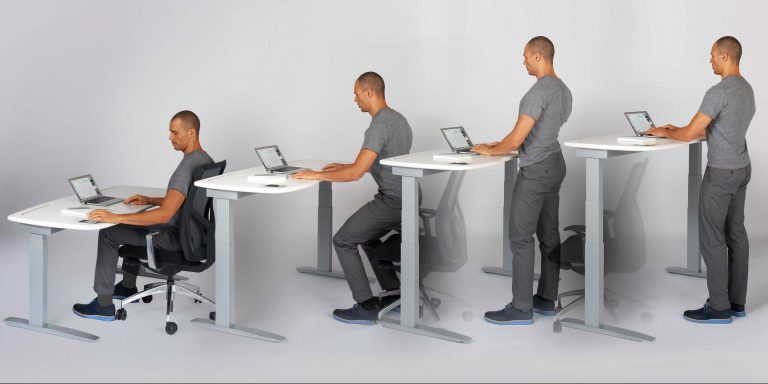
Back Pain
Standing desks have existed throughout history being documented in the 18th and 19th centuries as used by the rich. These desks have even been mentioned all the way back to the 1400s! Leonardo da Vinci is said to have painted the Mona Lisa while standing up at an easel and been at a standing desk when he came up with some of his other remarkable ideas such as flying machines and armored cars. Other prominent names to have used a standing desk include Thomas Jefferson, Ernest Hemingway, and Charles Dickens. Over the past 5-10 years, however, as research has come out about the negative effects of sitting all day, standing desks have become increasingly popular with the general population. As negative effects of sitting were recognized, people started researching the benefits of standing. Most people spend a good 40+ hours a week at work and many of these people are stuck at their desk throughout the day. One of the recognized benefits of a standing desk is its benefits for back pain. Due to this, many large companies, such as Google, now offer standing desks as part of their wellness programs. Even if your company doesn’t offer this benefit though, standing desks are now affordable to everyone coming in a range of styles and prices.

Back Pain
Standing desks have existed throughout history being documented in the 18th and 19th centuries as used by the rich. These desks have even been mentioned all the way back to the 1400s! Leonardo da Vinci is said to have painted the Mona Lisa while standing up at an easel and been at a standing desk when he came up with some of his other remarkable ideas such as flying machines and armored cars. Other prominent names to have used a standing desk include Thomas Jefferson, Ernest Hemingway, and Charles Dickens. Over the past 5-10 years, however, as research has come out about the negative effects of sitting all day, standing desks have become increasingly popular with the general population. As negative effects of sitting were recognized, people started researching the benefits of standing. Most people spend a good 40+ hours a week at work and many of these people are stuck at their desk throughout the day. One of the recognized benefits of a standing desk is its benefits for back pain. Due to this, many large companies, such as Google, now offer standing desks as part of their wellness programs. Even if your company doesn’t offer this benefit though, standing desks are now affordable to everyone coming in a range of styles and prices.
 Back pain has become a chronic problem in our society. According to the Mayo clinic, 80% of people will experience lower back pain at some point in their life. Back pain is primarily associated with people aged 35-55 years old (i.e who have been working for a number of years and are in the height of their career). If you go to the gym, you’ll see many people contorting their bodies in different stretching positions trying to alleviate this pain. These people aren’t blue collar employees who have strained their backs for years doing intense labor but primarily white collar individuals whose back is hurting from sitting and not using their back enough. Slouching in a seat or being hunched over a computer for years and years takes a toll on the back. By simply standing up, you engage your back muscles and improve your overall posture. In fact, by using a standing desk at work you can not only alleviate your back pain but you can cure yourself from it altogether. By setting your screen just above resting eye level you will naturally stand up straighter improving your posture and developing more core strength putting less burden on your back.
Back pain has become a chronic problem in our society. According to the Mayo clinic, 80% of people will experience lower back pain at some point in their life. Back pain is primarily associated with people aged 35-55 years old (i.e who have been working for a number of years and are in the height of their career). If you go to the gym, you’ll see many people contorting their bodies in different stretching positions trying to alleviate this pain. These people aren’t blue collar employees who have strained their backs for years doing intense labor but primarily white collar individuals whose back is hurting from sitting and not using their back enough. Slouching in a seat or being hunched over a computer for years and years takes a toll on the back. By simply standing up, you engage your back muscles and improve your overall posture. In fact, by using a standing desk at work you can not only alleviate your back pain but you can cure yourself from it altogether. By setting your screen just above resting eye level you will naturally stand up straighter improving your posture and developing more core strength putting less burden on your back.

Back pain has become a chronic problem in our society. According to the Mayo clinic, 80% of people will experience
lower back pain at some point in their life. Back pain is primarily associated with people aged 35-55 years old (i.e who have been working for a number of years and are in the height of their career). If you go to the gym, you’ll see many people contorting their bodies in different stretching positions trying to alleviate this pain. These people aren’t blue collar employees who have strained their backs for years doing intense labor but primarily white collar individuals whose back is hurting from sitting and not using their back enough. Slouching in a seat or being hunched over a computer for years and yearstakes a toll on the back. By simply standing up, you engage your back muscles and improve your overall posture. In fact, by using a standing desk at work you can not only alleviate your back pain but you can cure yourself from it altogether. By setting your screen just above resting eye level you will naturally stand up straighter improving your posture and developing more core strength putting less burden on your back.

Of course, like sitting, there is a right way and a wrong way to stand to eliminate back pain and improve your posture. Good posture, with correct alignment while working, is what will really do the trick. Yoga is a great way to learn stretches to alleviate current pain and get you standing in the correct position. While at your standing desk, use the Esther Gokhale method: “flatten your spine as you would for sitting. Make sure your weight is evenly distributed on both legs. Keep knees slightly flexed to avoid sway in your lower back, and put your weight in your heels”. In addition to standing correctly, you need to bend better. If you drop something or need to pick something up, the typical way people pick things up is to “…crunch at the waist and round the lower and mid-back, compressing disks” (Gokhale, 2016). This can cause inflammation and irritation to the spine and nerves. Gokhale, again stresses keeping the back flat by tilting at the hips and bending forward. This is ideal for picking up light items such as papers, a dropped pen or a coffee mug while at work.
So what does the research say? A study published in the journal “Preventing Chronic Disease” found …that participants who used standing desks at their workstations reduced upper back and neck pain by 54%” (updesk.com). Similar to Gokhale’s views, Tim Enwright (physical therapist) contributes back pain to posture. He says “Neck and back problems are often due to cumulative stresses such as sitting with bad posture all day”. The spine is shaped like an “s” but people who spend extended amounts of time slouching at a desk or in front of a computer can cause their spine to change to a “c” shape. Enwright states that standing promotes the natural “s” curvature of the back and puts less strain on oneself since there is not a chair helping to support your positions.

You should change your posture throughout the day, so an adjustable desk allowing you to change from a sitting to standing position with an adjustable height is ideal. Your new muscles, developed through standing, will reduce the threat of muscular aches and pains. Standing will take you off the list of common complainers that sitting all day is hurting your back. Additionally, to get the best results for eliminating back pain you need to make the change gradually. When you switch to a standing desk start with 30-60 minutes a day of standing and gradually build from there because the muscles to support standing will take time to build. While there may be healthy ways to sit at your desk for long periods of time, if you are a sloucher standing for a portion of the day will help keep your spine from collapsing into a “c” shape and help rid your upper back pain. The results are different for everyone so they best way to figure out if it works for you is to try it! Be sure to experiment with different time intervals to avoid developing new pains and to give yourself time to build up the appropriate muscles for the change. Furthermore, make sure you are being smart about the change and get yourself an anti-fatigue mat, don’t wear shoes such as heels all day (in fact stand barefoot!), and don’t lean forward to see your screen (raise your screen up to slightly above eye level and be sure your screen size isn’t too small).
You should change your posture throughout the day, so an adjustable desk allowing you to change from a sitting to standing position with an adjustable height is ideal. Your new muscles, developed through standing, will reduce the threat of muscular aches and pains. Standing will take you off the list of common complainers that sitting all day is hurting your back. Additionally, to get the best results for eliminating back pain you need to make the change gradually. When you switch to a standing desk start with 30-60 minutes a day of standing and gradually build from there because the muscles to support standing will take time to build. There are numerous ways to remind yourself of this including setting an alarm periodically, or getting a standing app to remind you. While there may be healthy ways to sit at your desk for long periods of time, if you are a sloucher standing for a portion of the day will help keep your spine from collapsing into a “c” shape and help rid your upper back pain. The results are different for everyone so the best way to figure out if it works for you is to try it! Be sure to experiment with different time intervals to avoid developing new pains and to give yourself time to build up the appropriate muscles for the change. Furthermore, make sure you are being smart about the change and get yourself an anti-fatigue mat, don’t wear shoes such as heels all day (in fact stand barefoot!), and don’t lean forward to see your screen (raise your screen up to slightly above eye level and be sure your screen size isn’t too small).



